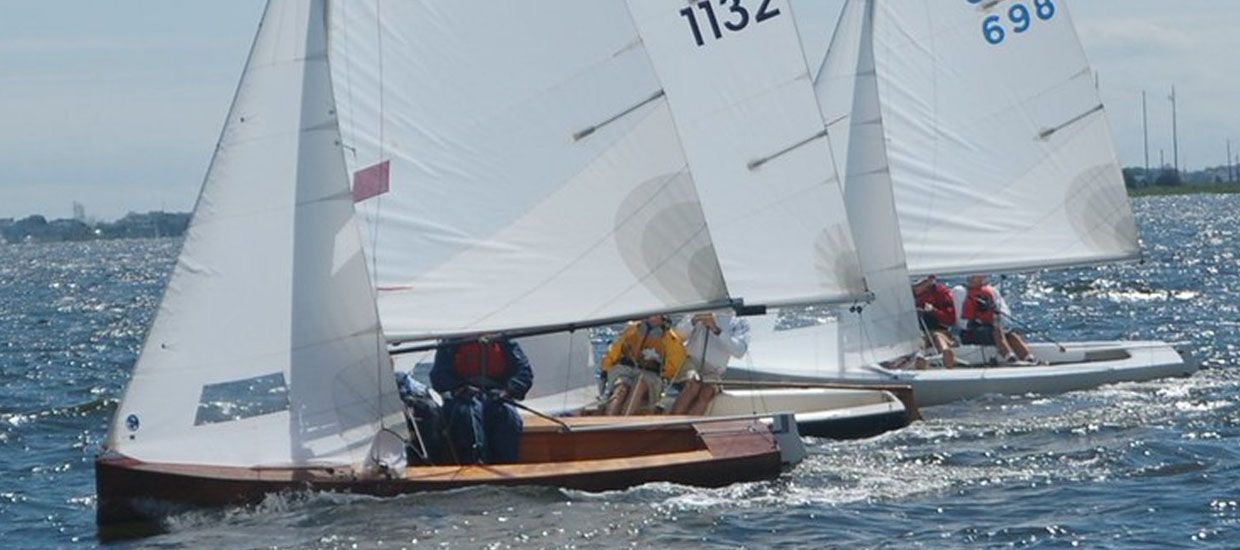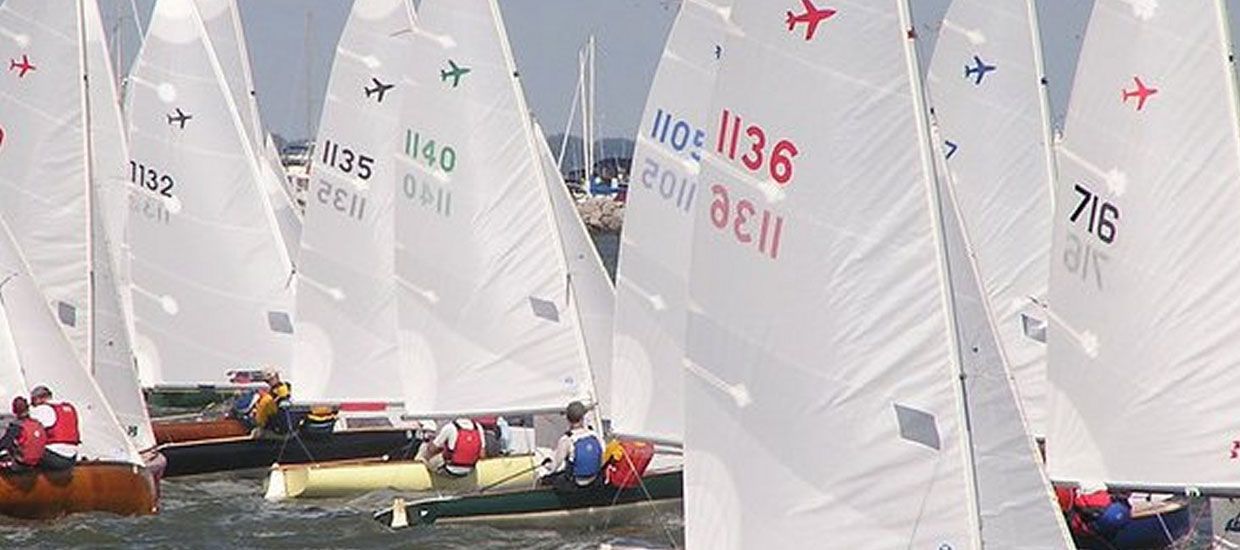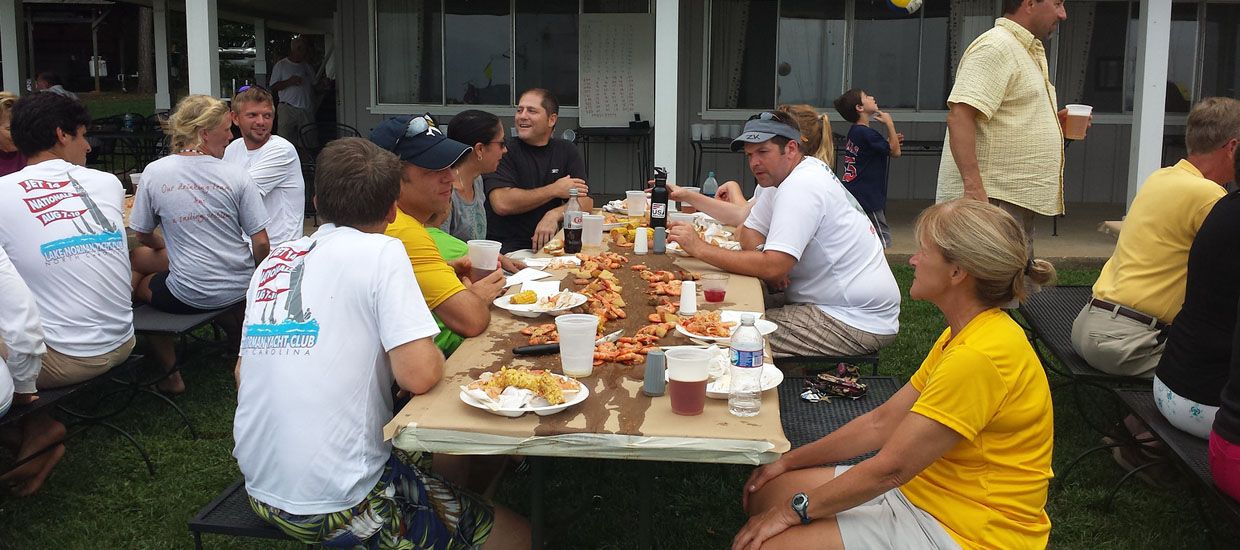Upwind trim analysis (2005, Schwenk)
UPWIND SAIL TRIM TUTORIAL
Mr. Mike Parramore snapped these photos during Jet frostbiting last week (Feb, 2005). They show a few things that are difficult to describe, but much easier to see in pictures. Virtually everything that I am about to say is borrowed unashamedly from real sailors like Greg Fisher or Greg Koski … but I hope that you find this helpful.
Both boats in the foreground (McKennas, 1140; Johnson/Cotell 1081) are flying early 2000 vintage Doyle/Koski mains on DM-1 rigs. Both boats have Doyle jibs.
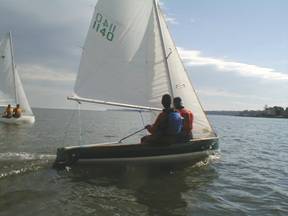 |
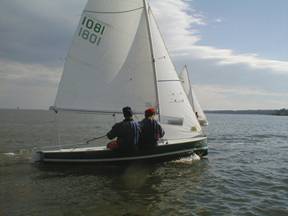 |
| McKennas: 1. Acceleration form: they are coming off the line using exceptionally fine form. Weight together; their boom is cocked up somewhat, indicating that they do not have yet trimmed down the main and they have a slight heel on. For acceleration in these conditions, this is perfect. Once up to speed, the boat should flatten, the mainsheet in a few clicks, and they should probably hike a touch – they would then be in full-on upwind mode. 2. Jib tension: note the slight crows feet coming in horizontally from the leading edge of the jib – this is is a way to read the amount of forestay sag. Appropriate sag (per the experts) is indicated by a bit of crows feet. 3. Overall: weight nicely together and forward for flat water. Perhaps a bit low in the groove? |
Johnson/Cotell: 1. Acceleration form: they are in the backwash from the McKennas, but perhaps a bit too tight, a bit too flat? 2. Jib tension: only wrinkles I can see are those that are running out in all directions from the tack. No horizontal wrinkles would seem to indicate too much forestay tension. 3. Overall: weight also nicely together and forward. Tiller properly in front of the body, and overall looking stable and comfortable. Jib telltales showing perfectly in the acceleration groove. |
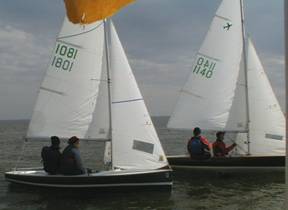
The two boats together, same day, different race. The main sets here are virtually identical – both with horizontal wrinkles running a bit more than a third of the way back. Fisher would say a bit more Cunningham: Koski would set it pretty much like this, I think. Neither shows “overbend” – that would be a longer crease running from about the spreaders back toward the clew. The booms here are just about even – indicating similar levels of mainsheet tension. One gets the sense again, however, that jibstay on 1081 is tighter – perhaps a touch too tight.
